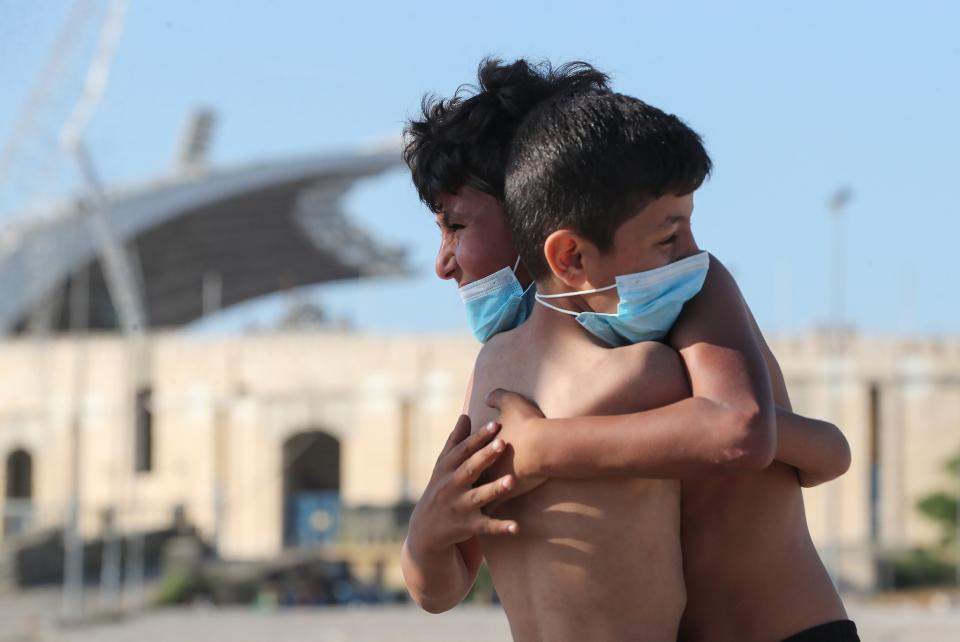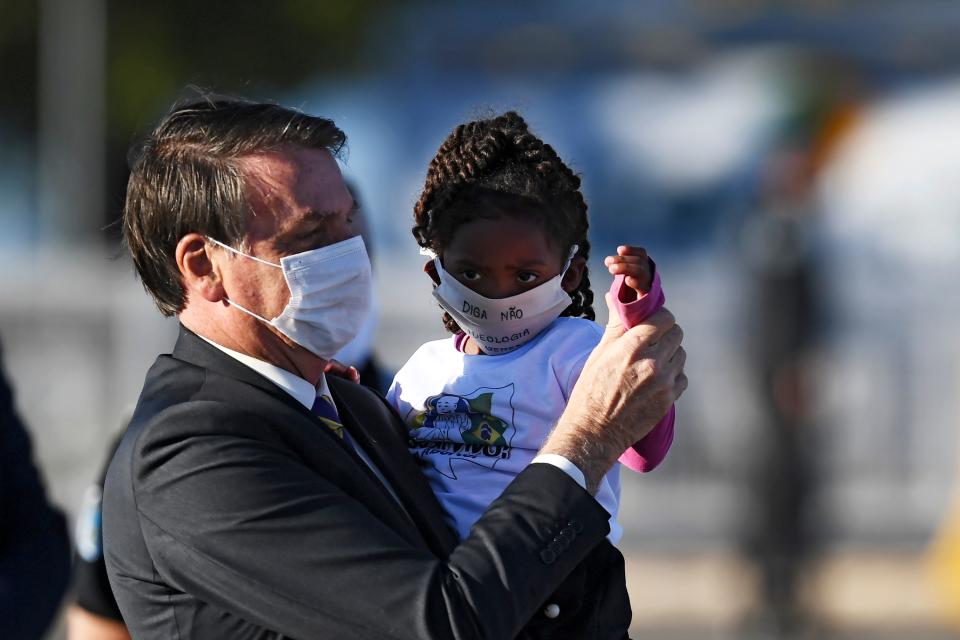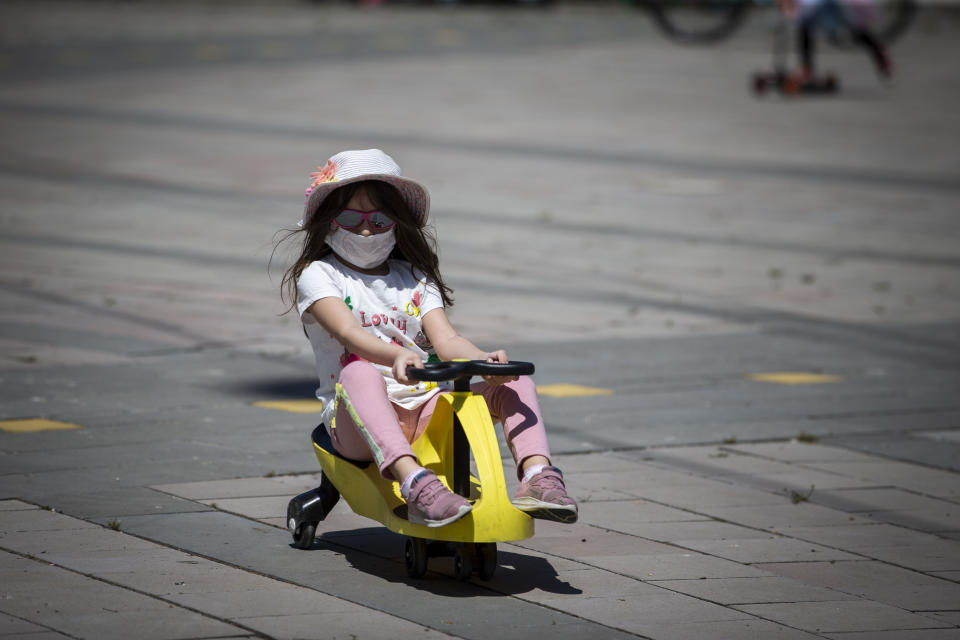Coronavirus: What we know about the rare inflammatory disease in children
It has come to light the coronavirus may trigger a mysterious inflammatory disease in children.
The vast majority of virus-related deaths worldwide have occurred in the elderly or already ill, with youngsters largely escaping unscathed.
Nevertheless, NHS doctors have been told to look out for signs of “multi-system inflammation” after intensive care units in London saw eight children with unusual symptoms, some of whom tested positive for the coronavirus.
A study published in the prestigious medical journal The Lancet details how 10 children developed a “rare inflammatory disorder” in the Bergamo province of Italy after the outbreak emerged in the north of the country.
Eight of these youngsters tested positive for coronavirus antibodies, with the Italian doctors wondering if the other two were false-negatives.
Only 19 children were diagnosed with a similar inflammatory disorder in Bergamo in the five years before the outbreak.
Early research suggests the coronavirus is mild in four out of five cases, however, it can trigger a respiratory disease called COVID-19.

What symptoms are some children developing?
Doctors have likened the mysterious inflammation to atypical Kawasaki disease.
This is a rare condition that usually affects children under five and causes blood vessels to become inflamed, leading to heart complications in about a quarter (25%) of patients.
Left untreated, the complications can be fatal in 2% to 3% of youngsters.
Latest coronavirus news, updates and advice
Live: Follow all the latest updates from the UK and around the world
Fact-checker: The number of COVID-19 cases in your local area
Explained: Symptoms, latest advice and how it compares to the flu
“Atypical” is defined as an “incomplete presentation of the disease”.
Symptoms usually include fever, rash, red eyes, dry or cracked lips, swollen lymph nodes, and redness on the palms and soles of the feet.
Although unclear, Kawasaki disease is thought to be due to an overreaction of the immune system to an infection.
Doctors have also drawn parallels to toxic shock syndrome (TSS), often associated with tampon use.
TSS – a medical emergency – can cause fever, flu-like symptoms, nausea, vomiting and difficulty breathing.
Experts have warned these symptoms are a sign the body is overwhelmed as it tries to fight an infection.
The Royal College of Paediatrics and Child Health (RCPCH) previously advised parents call 999 or take their child to A&E if they:
Become pale, mottled or abnormally cold to touch
Pause in their breathing, have an irregular breathing pattern or grunt
Have severe breathing difficulties, while becoming agitated or unresponsive
Go blue around the lips
Have a seizure
Become extremely distressed, confused, lethargic or unresponsive
Develop a rash that does not disappear with pressure, like when pressed under a glass
Have testicular pain, especially teenagers

‘Very rare’ complication of coronavirus
The 10 cases in Bergamo emerged between 18 February and 20 April; compared to 19 cases in the five years up to mid-February.
Although it is difficult to draw conclusions from such small numbers, the report suggests a 30-fold increase in incidences of the inflammatory syndrome.
Eight of the 10 children taken to hospital after 18 February tested positive for the coronavirus.
The doctors wondered whether the remaining two could have been a false-negative or if treatment masked the antibodies the children had produced against the infection.
All 10 of the youngsters survived, but became more ill than those who developed the inflammatory disorder prior to the coronavirus outbreak.
Six of the 10 children (60%) suffered heart complications, compared to just two of the 19 (10%) before the pandemic.
Half of the 10 (50%) also showed signs of TSS, which did not affect any of the youngsters admitted prior to the outbreak.
All the children received “antibody treatment”, however, eight (80%) of those who became ill amid the coronavirus also required steroids.
This is compared to just four (16%) of the pre-pandemic youngsters.
Those admitted amid the coronavirus were also older than the patients the doctors had treated before, with an average age of seven compared to three.
“We noticed an increase in the number of children being referred to our hospital with an inflammatory condition similar to Kawasaki disease around the time the [coronavirus] outbreak was taking hold in our region,” said study author Dr Lucio Verdoni, from Hospital Papa Giovanni XXIII.
“Although this complication remains very rare, our study provides further evidence on how the virus may be affecting children.
“Parents should follow local medical advice and seek medical attention immediately if their child is unwell.
“Most children will make a complete recovery if they receive appropriate hospital care.”
Lead author Dr Lorenzo D’Antiga added how other coronavirus hotspots like New York have seen similar cases.
“Our study provides the first clear evidence of a link between [the coronavirus] infection and this inflammatory condition, and we hope it will help doctors around the world as we try to get to grips with this unknown virus,” he said.
While it may sound far-fetched that a respiratory infection could affect the heart, the virus triggers an immune response that can impact any part of the body.
For example, dermatological reports have emerged of patients developing rashes, chilblains and “COVID toes”.

Coronavirus: How concerned should parents be by the inflammatory disorder?
Overall, children who have caught the coronavirus have been relatively unaffected.
People under 18 made up just 2% of cases reported in a large UK study.
Many infections may have gone unnoticed in youngsters who developed no symptoms, or just a mild cough that may have been dismissed as a cold or hay fever.
Speaking at a Science Media Centre briefing, Professor Russell Viner – president of the RCPCH – pointed out the number of coronavirus deaths among children in the UK could be counted on two hands.
He estimated between 75 and 100 youngsters across the country have been admitted to hospital with the Kawasaki-like disease.
“In our experience, only a very small proportion of children infected with [the coronavirus] develop symptoms of Kawasaki disease,” said Dr Annalisa Gervasoni, an author of the Italian study.
“However, it is important to understand the consequences of the virus in children, particularly as countries around the world grapple with plans to start relaxing social distancing policies.”
The emergence of this new condition may be leaving parents anxious after Boris Johnson announced primary schools could open as early as June.
“The total numbers of children who get this syndrome are very small,” said Prof Viner.
“Around 5,000 children die tragically each year. Some of these are premature babies, but 160 to 170 die in car crashes. Those deaths are tragic but also rare.
“How do we manage those? We buy child seats, we use seat belts, we sometimes buy better cars; but we don’t stop driving.
“This syndrome is much, much more rare than car accidents involving children.
“It should not stop parents sending their children back to school when schools are ready to re-open.
“What parents do need, however, is knowledge and understanding so they know what to look out for”.
As of 27 April, NHS England knew of fewer than 20 cases where an association between the coronavirus and the Kawasaki-like condition had been noted by doctors, the BBC reported.
There is no set diagnosis for Kawasaki, with medics just having to assess the patient.
NHS England issued an urgent alert to GPs to be aware of the condition, but stressed no link had been established with the coronavirus.
At least 15 US states are looking into the rare inflammatory disorder, according to New York governor Andrew Cuomo.
The US Centers for Disease Control and Prevention is due to issue an alert to healthcare providers this week.
Writing in an editorial linked to the Italian study, Prof Viner said: “Although the article suggests a possible emerging inflammatory syndrome associated with COVID-19, it is crucial to reiterate – for parents and healthcare workers alike – that children remain minimally affected by [the coronavirus] infection overall.
“Understanding this inflammatory phenomenon in children might provide vital information about immune responses to [the coronavirus] and possible correlates of immune protection that might have relevance both for adults and children.
“In particular, if this is an antibody-mediated phenomenon, there might be implications for vaccine studies, and might also explain why some children become very ill with COVID-19, while the majority are unaffected or asymptomatic.”
Professor Alastair Sutcliffe, from University College London, added: “There is apparently a small risk but no grounds for panic.
“COVID is a worldwide living experiment and an opportunity to study many effects of this terrible plague on illnesses other than COVID; this insight into this Kawasaki-like disease is just one more brick in the wall”.

What is the coronavirus?
The coronavirus is one of seven strains of a virus class that are known to infect humans.
Others cause everything from the common cold to severe acute respiratory syndrome (Sars), which killed 774 people during its 2002/3 outbreak.
Since the coronavirus outbreak was identified, more than 4.3 million cases have been confirmed worldwide, according to Johns Hopkins University.
Of these cases, over 1.5 million are known to have “recovered”.
Globally, the death toll has exceeded 293,000.
The coronavirus mainly spreads face to face via infected droplets expelled in a cough or sneeze.
There is also evidence it is transmitted in faeces and can survive on surfaces.
Symptoms include fever, cough and slight breathlessness.
The coronavirus has no “set” treatment, with most patients naturally fighting off the infection.
Those requiring hospitalisation are given “supportive care”, like ventilation, while their immune system gets to work.
Officials urge people to ward off the coronavirus by washing their hands regularly and maintaining social distancing.


